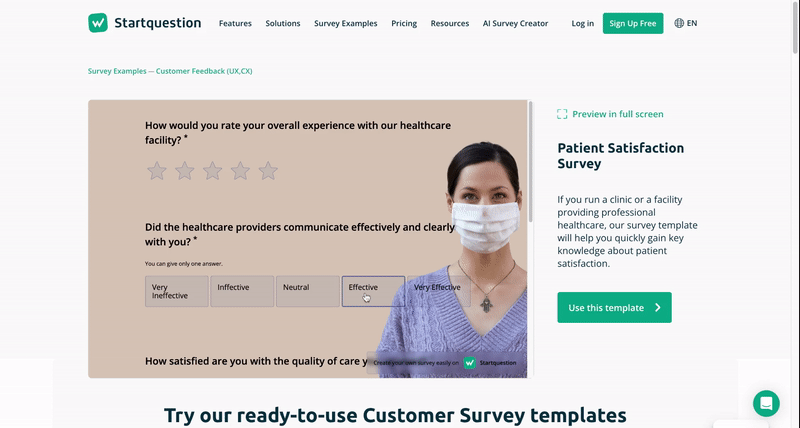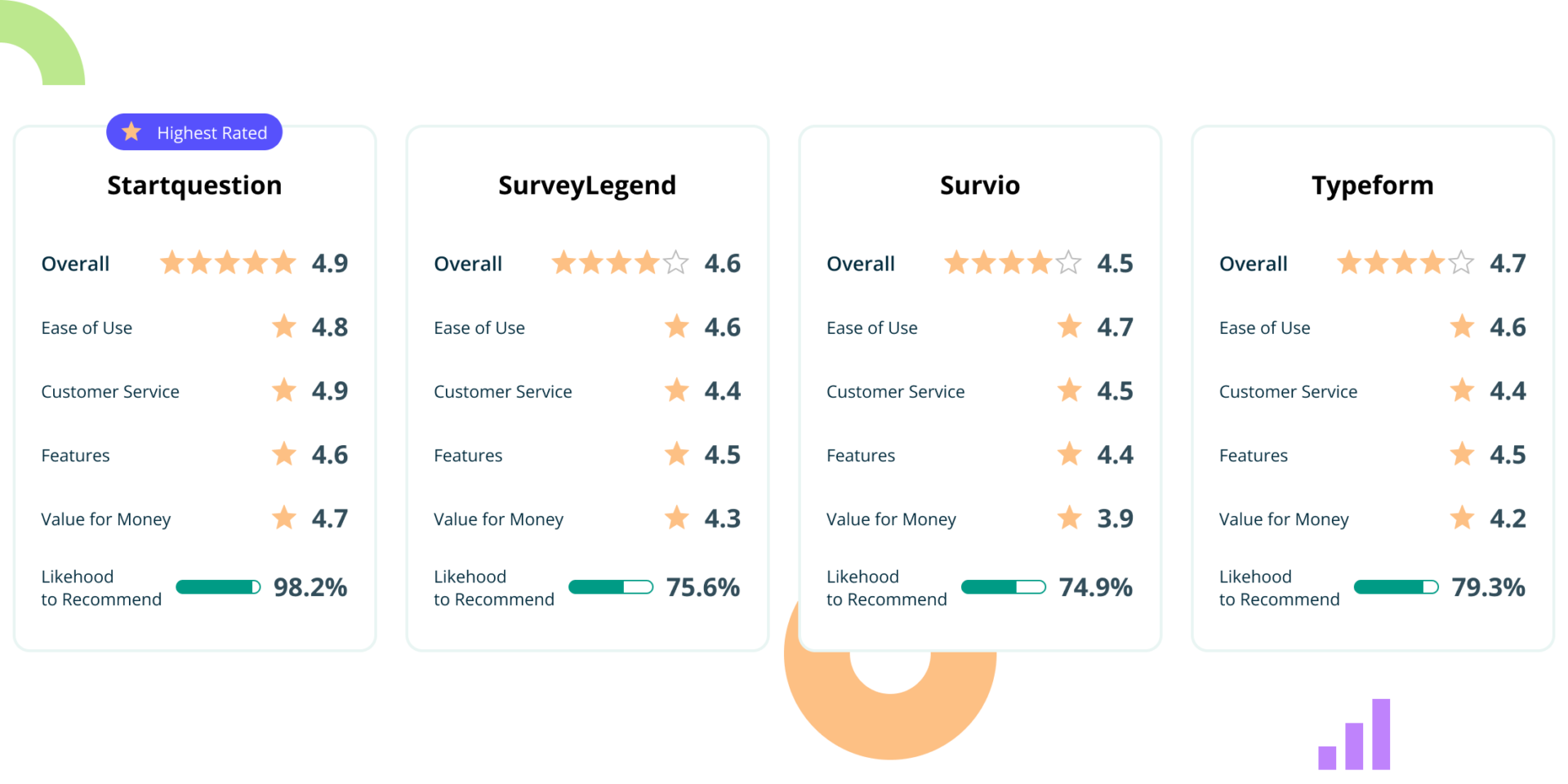Asking the right questions is an art form in surveys and interviews. Skillfully crafted questions can shape the quality of responses, providing invaluable insights. But you should proceed cautiously and avoid the pitfalls of leading questions to unlock the potential of inquiry.
This article will delve into the definition of leading questions, explore various types with examples, distinguish between leading and loaded questions, and discuss practical methods to steer clear of this common survey trap.
What Are Leading Questions?
Some time ago I went to a supermarket to buy groceries. With a full basket, I finally reached the checkout. Apart from the smiling cashier, there was a card waiting for me asking for an NPS assessment of my purchases and… an indication of what grades the supermarket manager expected from me.
I’m not the only one who has encountered this type of request. Do such survey responses have any value? Will the result obtained in this way provide objective information about customer satisfaction? Nope. And nope. Any attempt to interfere with feedback to get the desired answer is manipulation.
Just like pointing out a particular answer in a question.
Survey Templates Free of Bias
Looking for more – check out ready-to-use CX survey examples
Definition of a Leading Question
A leading question is a type of question that suggests the desired answer or contains assumptions that may influence the respondent’s answer. Answering such questions can lead to biased or inaccurate results, thus undermining the integrity of the survey.
Survey Bias: An Unwanted Consequence
The main goal of surveys is to collect unbiased and genuine information. However, they can introduce bias when the questions lead by directing respondents towards a specific answer.
It can compromise the reliability of the collected data, leading to skewed results and misinformed decision-making. Survey bias can occur when the survey’s design or execution systematically skews the responses in a specific direction.
Leading questions are a significant source of bias as they can predispose respondents to answer in a way that aligns with the questioner’s expectations.
Leading Questions Examples
Let’s dive into the real meat of the article’s topic – enough with the theory!
Understanding the subject’s nuances allows us to grasp its significance and make informed decisions. It is time to explore various types of leading questions with few examples that illustrate their impact on survey outcomes.
Assumption-Based Leading Questions
Assumption-based questions contain an implicit assumption that influences the respondent’s answer.
Ironically speaking, this group includes all questions like: “Why do you love our product so much?” instead of an objective inquiry about the customer’s genuine emotions related to our product. That’s now what feedback surveys should look like.
Question example
“Considering the success of our recent marketing campaign, how satisfied are you with our products?”
Direct Implication Questions
Direct implication leading questions force respondents with a specific answer by directly implying a consequence. Among this group of leading questions, we will find indications such as “If you think our product is great, would you recommend it to others?” suggesting an answer to the respondent.
Question example
“How much healthier do you feel after using our fitness app regularly?”
Leading Questions Based on Coercion
These questions use coercion to guide respondents toward a particular response. Customer satisfaction surveys are effective when the respondent answers honestly, and nothing influences their score. Coercive leading questions attempt to force the answer that the survey creator expects.
Question example
“Don’t you agree that our new software is more user-friendly than the previous version?”
Scale-Based Leading Questions
Even seemingly neutral scale-based questions can be leading. Sometimes, one word is enough to direct the respondent to an answer instead of maintaining the neutrality necessary to avoid writing leading questions.
Question example
“On a scale of 1 to 10, how amazing do you find our customer service?”

Leading vs Loaded Questions
When designing a questionnaire, it is essential to distinguish between a leading survey question guiding respondents toward a “correct” answer and a loaded question introducing emotional or provocative language to carry an additional layer of bias.
A leading question nudges respondents:
- “How satisfied are you with our premium subscription?”
A loaded question adds emotional weight:
- “Don’t you think our competitors’ inferior products are harming the industry?”
How to Avoid Leading Questions? [With Examples]
Robust survey design calls for the art of crafting questions that truly inspire without leading. Here are five tips that will make this task easier for you, along with examples of how to replace different types of leading questions with ones that will not negatively impact the survey results.
Don’t Lead with a Biased Statement
Ask unbiased questions to avoid influencing responses. For example, instead of saying, “Our new product is revolutionary, isn’t it?” ask, “What are your thoughts on our new product?”
Remove Biased Language
When creating survey questions, avoid biased language that may influence possible answers. For example, replace “How much did you enjoy our fantastic event?” with “What are your thoughts on our recent event?”
Avoid Combining Questions & Keep Them Short
Long and complex questions can inadvertently introduce bias. Keep questions concise and focused to gather more precise responses. For example, split “How satisfied are you with our service and pricing?” into two separate questions.
Combining two questions into one creates double-barreled questions, which can negatively influence respondents’ attitudes and lead to false feedback. We discussed this issue in detail on our blog: Double-Barreled Questions Examples – Learn How to Avoid Them!
Use Open-Ended Questions
Encourage unbiased responses with open-ended questions. For instance, instead of asking, “Did you find our support helpful?” try “What was your experience with our support team like?”
Offer an “Other” Option
Providing an “Other” option allows respondents to share experiences not addressed in the given choices, preventing bias and promoting diverse viewpoints.

Collect Honest Feedback with Professional Tool
In the complex landscape of surveys, the choice of questions holds the key to unlocking genuine insights that can transform our understanding of the world. By steering clear of leading questions and focusing on impartial questioning, we can ensure that the data collected accurately reflects the true sentiments of respondents.
With a commitment to unbiased research, we can embark on a journey toward discovering meaningful and reliable data that can help us make informed decisions. The power to uncover the truth lies in those who ask the right questions with an open mind and a dedication to fairness.
Ready to ask unbiased questions to your survey respondents?








